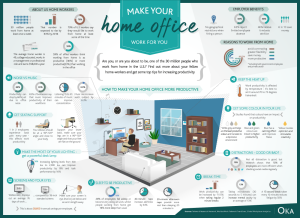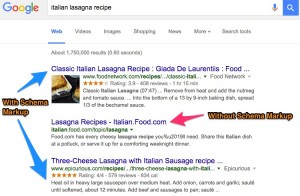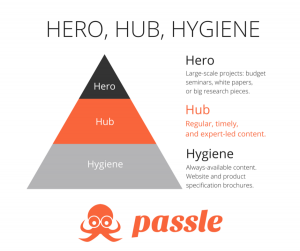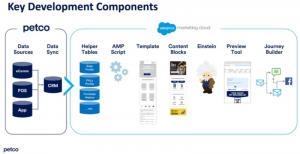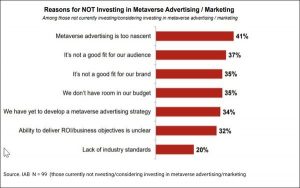— December 23, 2018

pixelcreatures / Pixabay
All blogs are not created equal. Despite what you might have heard, any blog post isn’t better than no blog at all. Throwing together a post that’s lacking necessary elements could hurt your brand’s reputation more than not having a blog. Your company needs to make each post shine to establish the brand as a trusted, polished, industry thought-leader – starting with blog anatomy. Make sure each one of your blog posts has the following parts to give it what it needs to succeed.
Title (Headline)
Creating a killer title, or headline, is the first step in getting your blog the attention it deserves. The headline is the first thing readers see. It needs to contain the keywords that will lead to the blog showing up on the search engine results page (SERP), but it also needs to be catchy and creative enough to stand out from others on the SERP. Tips for writing great titles include:
- Keep it short (65 characters or less)
- Use relevant keywords
- Pique intrigue and spark curiosity
- Promise something the blog will deliver
- Use proven types, such as “How-To” titles
- Play on readers’ emotions (humor, shock, etc.)
- Share advice from an expert
- Use the list format (X Ways to…, etc.)
- Ask a question
- Make readers feel like they’re missing out
- Insert a powerful statistic
- Make a human connection
- Be controversial
Veteran bloggers tend to fall back on a few trusty title algorithms for easy title creation that works. A general formula you could use is: Number/How/Why/What + Keyword + Adjective + Promise. For example, 10 Tricks for Better Blog Titles. Use a tool such as Google AdWords Keyword Planner to find the right keywords to insert into your titles. Creating a title isn’t rocket science! When in doubt, keep it simple.
Meta Description
A meta description is a concise summary of what the reader will find on the webpage. It is an HTML attribute that Google (and other search engines) use to put the most relevant results on the SERP. They are generally 155 characters or less, although Google will allow up to 170 characters. The meta description should be narrative in nature, not just a list of keywords. It should express full thoughts and sentences describing what’s on the page.
Meta descriptions are very important in search engine optimization (SEO) and gaining click-throughs on the SERP. They are your chance to advertise your content and cinch more clicks. The meta should contain the information users need to decide if the webpage is relevant to what they searched. Write compelling, original copy using keywords. Make each meta description unique. Note that it is up to Google whether to use your meta description. If not, Google will use the first few sentences on the webpage as a meta description.
Featured Image
Each blog post on your website should contain at least one high-quality image that’s relevant to your content. This will be your “featured image.” Your featured image may appear in your list of blog posts on your website. Including a featured image at the beginning of each blog post will allow this image to appear in social shares, increasing the odds of click-throughs. Studies have shown that 93% of the most engaging posts on Facebook are photos. A featured image can help you grab attention, get more page views, and boost your website’s reputation.
Introduction
Do not skip the introduction to your blog post and dive right into the body. Your introduction can be short, sweet, and to the point – but it must be there nonetheless. Introductions can be the most difficult part of a blog to write, but there are tips and rules to help make the process easier. Keep your introduction strong, compelling, and brief. Remove any weak language and use descriptive language to keep them hooked. Pay special attention to the first two sentences of your intro, as these could become the page’s meta description.
Subheads
Writing and formatting your subheads correctly can increase the visibility of your blog post on the SERP. Your subheads should be just as intriguing and irresistible as the title of the blog. The vast majority of users skim a blog’s content; they don’t read it word-for-word. Writing great subheads can increase the odds of readers staying on the page. They’ll skim through the subheads to get to the information they’re looking for faster or to decide if the blog contains the information they need. Use subheads to pique curiosity, but keep them simple and descriptive.
Body
The body of your post is where your readers will find the heart of the information. As with all content in your blog, the body needs to consist of high-quality prose that flows well and sticks to your intended tone and audience. The body should adhere tightly to the theme or topic of the post, answering the question or delivering the promise presented in the title. Use the following tips:
- Stay relevant and insightful.
- Keep it entertaining and engaging.
- Make it easy to read – use enough white space.
- Insert keywords.
- Avoid repeat content and redundancy.
- Keep the structure clear.
- Break content up with bullet points and lists.
- Highlight the most important terms in bold.
The body of your blog should be skimmable, but it should also present in-depth, quality information with data, statistics, links, and more. Readers should be able to quickly and easily find the information they’re looking for, as well as the solution to their query. Insert multimedia such as videos and infographics to make your blog post stand out.
Conclusion
Your conclusion should succinctly summarize all of the information your blog post provided. A great conclusion for this blog post, for example, might look like this:
Now that you know the anatomy of a blog post, you’re ready to write one of your own. Keeping to a proven outline can boost your blog’s readership, click-throughs, and ultimate your business’s conversion rates. Include these elements in every post to optimize your odds of success.
Call-to-Action
One of the most important (yet often forgotten) parts of a blog post is the call-to-action, or CTA. Although not every blog needs a CTA, they can be useful if you want your blog to accomplish a specific user action, such as subscribing to an email list or making a purchase. Your CTA should be brief and follow a few best practices for effectiveness, such as using the first person, linking to the proper landing page, using powerful words, and telling the reader to take the desired action.
For example: If you don’t want to worry about crafting the perfect blog on your own, have a trusted provider manage your business blog for you. Contact CEM for all of your content-writing needs!
Digital & Social Articles on Business 2 Community
(71)
Report Post




